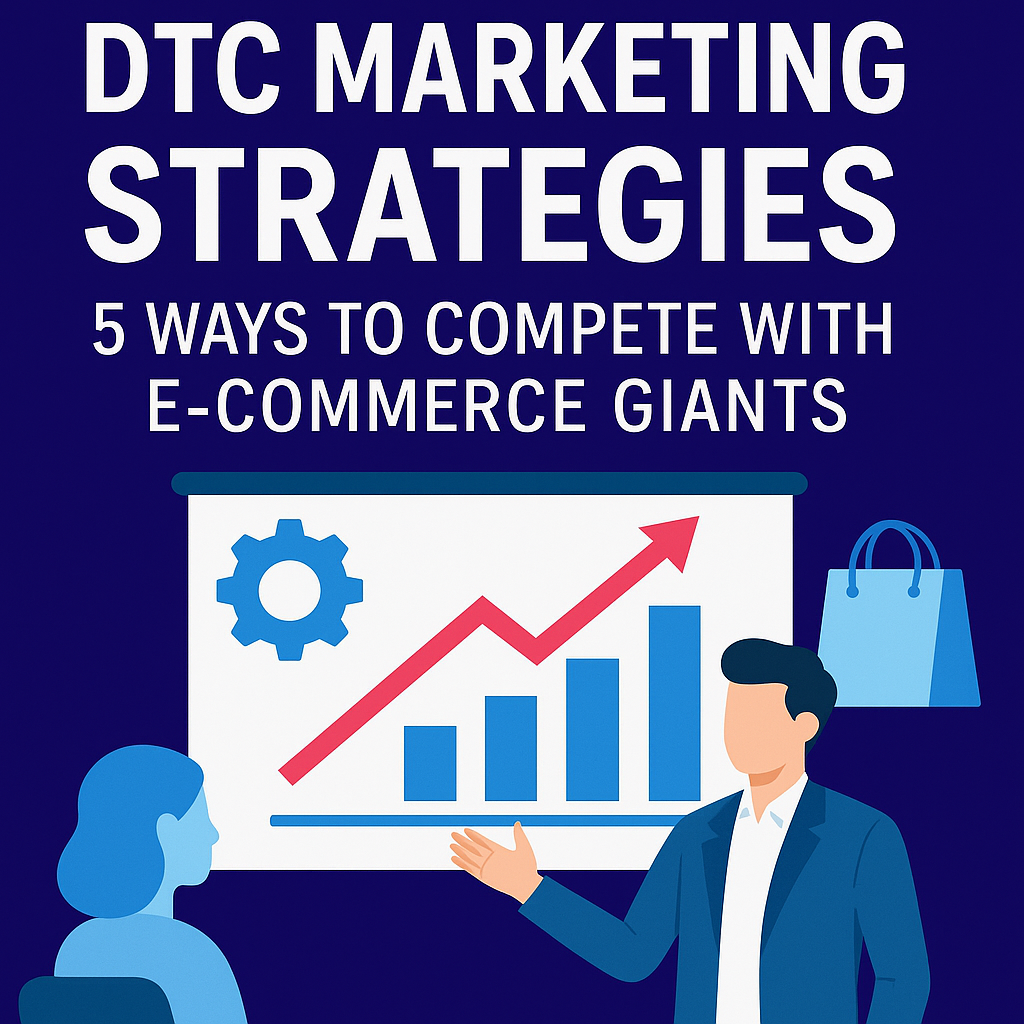5 Proven DTC Marketing Strategies to Beat E-commerce Giants


Building a direct-to-consumer (DTC) brand today feels like running a small boat next to a giant cruise ship. You know the ocean is big enough for everyone, but when the waves are dominated by Amazon, Walmart, and other e-commerce giants, how do you stay afloat—let alone thrive?
The good news is, DTC marketing gives smaller brands unique advantages: agility, authenticity, and closer customer relationships. With the right strategies, you can carve out your niche and stand strong against even the largest competitors.
In this post, I’ll walk you through five proven DTC marketing strategies that help direct-to-consumer brands stand out in the era of e-commerce competition.
Direct-to-consumer marketing has one big similarity with blockchain technology: both aim to cut out the middleman. While DTC brands connect directly with customers, blockchain allows peer-to-peer transactions without banks. If you’re curious how decentralization is shaping the financial world, check out our article on cryptocurrency fundamentals.
1.Tell a Story That Giants Can’t Replicate
E-commerce giants sell everything. But what they often lack is storytelling. As a DTC brand, your power lies in being personal, relatable, and transparent.
Think of Allbirds (the sustainable shoe company). Their story isn’t just about shoes—it’s about eco-consciousness, material innovation, and community. People don’t just buy sneakers; they buy into the mission.
How you can apply this:
- Share the why behind your brand: what problem inspired your product?
- Show behind-the-scenes: your team, process, or materials.
- Use brand visuals consistently across channels (social, email, website).
Storytelling helps create emotional loyalty, something even e-commerce giants can’t easily copy.
2. Leverage Niche Marketing to Your Advantage
Instead of trying to compete on everything, focus on niche marketing. Being small is actually your strength—it allows you to be laser-focused on one audience segment.
For example:
- A direct-to-consumer skincare brand might focus only on people with sensitive skin.
- A DTC coffee brand might target environmentally conscious millennials who care about fair trade.
Data insight: According to Statista, niche markets have higher retention rates because customers feel understood and valued.
Action steps:
- Define your ideal customer persona in detail (age, lifestyle, pain points).
- Create products and content specifically for that group.
- Position yourself as the go-to brand for that niche.
E-commerce competition is about scale, but niche marketing is about precision.
3. Build Direct Relationships Through Personalization
E-commerce giants are masters of logistics, but they struggle with personal connection. You can turn this into your superpower by personalizing your customer experience.
Some ideas:
- Send handwritten thank-you notes with orders.
- Personalize email campaigns (using first names, recommending products based on purchase history).
- Offer loyalty programs tailored to your customers’ behaviors.
Research backs this up: A McKinsey report shows 71% of consumers expect personalized interactions, and brands that do personalization well drive up to 40% more revenue.
Personalization isn’t about fancy tech—it’s about showing customers you see them as individuals, not order numbers.
4. Use Content Marketing as Your Growth Engine
While e-commerce giants rely heavily on paid ads and massive budgets, DTC brands can win through content marketing.
Think of content as your long-term investment:
- Blog posts that answer customer questions (great for SEO).
- Video tutorials on how to use your product.
- Social storytelling (TikTok, Instagram Reels) that entertains and educates.
Example: Glossier built an entire community around beauty tips, user-generated content, and social engagement before scaling into a billion-dollar brand.
Why it works: Content builds trust, improves discoverability, and creates organic traffic without relying entirely on paid ads.
5. Turn Your Customers Into Advocates
Here’s the truth: people trust people more than brands. That’s why word-of-mouth and referral programs are gold for DTC marketing.
E-commerce giants rely on scale, but you can build something they can’t—a community of brand advocates.
How to do it:
- Launch a referral program (“Give $10, Get $10”).
- Encourage user-generated content (UGC) with branded hashtags.
- Spotlight your customers in newsletters or social media.
Stat to note: Nielsen research found 92% of consumers trust recommendations from people they know over any other form of advertising.
Turning customers into advocates not only lowers acquisition costs but also builds long-term loyalty.
You can see a real-world example of dynamic pricing in fast food that highlights how customers react to changing prices.
FAQs About DTC Marketing
Q1: What does DTC marketing mean?
DTC marketing is short for Direct-to-Consumer marketing. It’s when brands sell and market directly to customers without relying on third-party retailers.
Q2: How can small DTC brands compete with e-commerce giants?
By focusing on niche marketing, storytelling, personalization, content marketing, and community building—areas where giants struggle to be authentic.
Q3: Is DTC marketing more expensive than selling through retailers?
Not necessarily. While you invest more in marketing, you save on retailer cuts and gain higher control over pricing, branding, and customer data.
Q4: Can DTC brands scale globally?
Yes, but it requires careful strategy: logistics, localized content, and maintaining brand authenticity. Some of the fastest-growing global brands today started as small DTC businesses.
Final Thoughts
Competing with e-commerce giants isn’t about beating them at their own game—it’s about playing a different game altogether.
As a direct-to-consumer brand, you have advantages they don’t: agility, authenticity, and deeper customer relationships. With strategies like storytelling, niche marketing, personalization, content creation, and community building, you can create a brand that not only survives but thrives.
Remember: people don’t always choose the biggest brand—they choose the one that understands them best.




